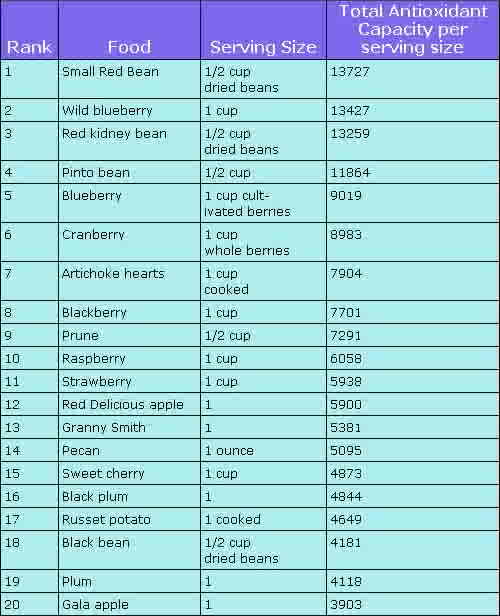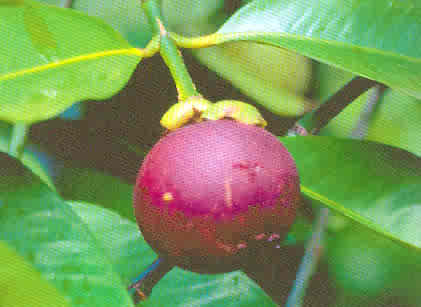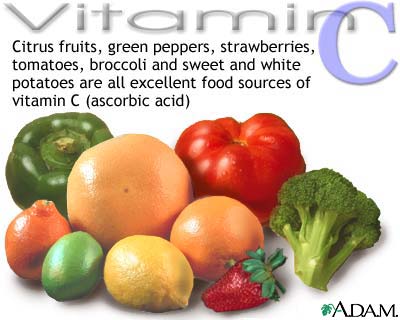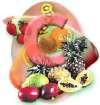Antioxidants in Food List
Now Playing: In Search of the Highest Food Antioxidant
 1. Antioxidant List2. Largest Antioxidant in Food Study
1. Antioxidant List2. Largest Antioxidant in Food StudyHerbs Rich Source of Healthy Antioxidants; Oregano Ranks Highest
Better health may be only a dash and sprinkle away: Researchers with the U.S. Department of Agriculture have found that herbs, in addition to making food tastier, are an abundant source of antioxidants and could provide potential anticancer benefits when supplementing a balanced diet.
Herbs have higher antioxidant activity than fruits, vegetables and some spices, including garlic, the researchers say. Some herbs should be considered as regular vegetables. People should use more herbs for flavoring instead of salt and artificial chemicals.
In what may be good news for pizza lovers and Italian food connoisseurs everywhere, the herbs with the highest antioxidant activity belonged to the oregano family. In general, oregano had 3 to 20 times higher antioxidant activity than the other herbs studied.
On a per gram fresh weight basis, oregano and other herbs ranked even higher in antioxidant activity than fruits and vegetables, which are known to be high in antioxidants. In comparison to the antioxidant activities of a few select fruits and vegetables, the potency of oregano ranks supreme: Oregano has 42 times more antioxidant activity than apples, 30 times more than potatoes, 12 times more than oranges and 4 times more than blueberries.
For example, one tablespoon of fresh oregano contains the same antioxidant activity as one medium-sized apple, she says.
Adding a moderate amount of herbs may go a long way toward boosting the health value of a meal, especially as an alternative to salt and artificial additives.
Even if you're not into oregano, other herbs also appear to pack a significant antioxidant punch. Among the more familiar, ranked in order, are dill, garden thyme, rosemary and peppermint.
The most active phenol component in some of the herbs with the highest antioxidant activity, particularly oregano, was rosmarinic acid, a strong antioxidant.
Antioxidants have become synonymous with good health. They are a class of compounds thought to prevent certain types of chemical damage caused by an excess of free radicals, charged molecules that are generated by a variety of sources including pesticides, smoking and exhaust fumes. Destroying free radicals may help fight cancer, heart disease and stroke, researchers believe.
Fruits and vegetables have long been viewed as a rich source of antioxidant compounds. Health officials have been urging consumers for years to eat more fruits and vegetables in order to gain the health benefits of antioxidants, but progress has been slow, according to researchers.
More recently, researchers have begun to formally study the health benefits of herbs and spices. The two differ mainly by source. Herbs typically come from the leaves of plants. Spices come from the bark, stem and seeds of plants. Both have been used for thousands of years to flavor foods and treat illness.
Now, herbs have emerged as a quick and easy way to get a concentrated source of antioxidants - without all the extra calories of whole foods.
Herbs can be consumed in a variety of ways. Some people prefer to drink herb extracts, which can be made by adding herbs to hot water to make potent antioxidant teas. Others use concentrated herbal oils available in some health food stories. Most of us prefer a little dash and sprinkle of the familiar leafy or powdered versions to add flavor to our favorite meats and vegetables.
In general, fresh herbs and spices are healthier and contain higher antioxidant levels compared to their processed counterparts. For example, the antioxidant activity of fresh garlic is 1.5 times higher than dry garlic powder.
Just as consuming too much of any food product can carry health risks, herbs should be used with moderation.
Whatever form they take, herbs are no substitute for a balanced diet. Pregnant women in particular should consult their physicians before taking herbal supplements.
Journal of Agricultural and Food Chemistry November 2001
--------------------------------------------------------------------------------
Dr. Mercola's Comment:
Well, now we know the difference between an herb and a spice.
Amazing how two of the most popular Italian herbs, garlic and oregano are two of the most useful nutritional herbs.
If you are not using these two useful herbs I strongly encourage you to consider using them. Remember that most of the major anti-infection benefits of garlic are lost unless you use it raw.
You can use 1-2 cloves in your vegetable juice to obtain maximum benefit. The chlorophyll in the juice also tends to cut down on the potentially offensive garlic odor.
Related Articles:
RAW Garlic For Parasites and Viral Infections
Oregano, Other Essential Oils Destroy Strep Pneumonia Cells
 Tropical and Subtropical Fruit
Tropical and Subtropical FruitBenefits
1. Defends Against Free Radicals*
The xanthone flavonoids and other compounds in mangosteen fruit are responsible for its high level of antioxidant activity. In vitro tests have been conducted on XanoMax mangosteen 10% extract to determine the level of free radical scavenging ability in both watery and fatty environments. A major test recognized as the industry standard for measuring antioxidant activity is known as the ORAC (Oxygen Radical Absorbance Capacity) assay.
The ORAC test is an in vitro assay that works by measuring the amount of free radical damage done to a fluorescent probe (measured by a change in probe intensity). Antioxidants lessen the damage to the probe fluorescence, which indicates a reduction in free radical damage. This measure is used to quantify the antioxidant's (or combination of antioxidants) capacity to quench free radicals. This quantification is known as the total ORAC value. The total ORAC value provides a relative measure of total antioxidant strength of any substance, allowing for comparison of different mixtures. A high ORAC value corresponds to a high total in vitro antioxidant capacity.
The development of the ORAC test has led to a number of commonly eaten foods being assessed in terms of total ORAC scores per serving. Similarly, particular combinations of antioxidants, such as those in nutritional formulas, can also be assessed for their total ORAC scores. This has led to the ability to determine the potential usefulness of a particular supplement in increasing overall antioxidant capacity.
When XanoMax mangosteen 10% extract was tested for ORAC value, the resulting antioxidant potential was over 3,500 ORAC units per gram of extract. This result is extremely high. ORAC values of compounds vary with their nutrient concentration, moisture content and other factors. For comparison purposes, whole blueberries, considered to be a rich source of antioxidants, had an ORAC value of 61 units per gram, while pomegranate tested at 105 ORAC units per gram.1 XanoMax mangosteen extract is a potentially rich source of beneficial antioxidants*
2. Maintains Healthy Immune Function*
Evidence from several animal and in vitro studies on various cell lines suggests that components of mangosteen fruit extract may play a role in modulating several factors important to healthy immune function. Of the active components, xanthone derivatives seem to play the major role in influencing parameters of immune function in animals and in vitro models. Mangostin is the xanthone derivative that most of these studies have focused on.
A study published in 2002 assessed the effects of mangosteen extracts on the release of histamine from rat cell lines. The comparison was made to extracts of a plant frequently used in Japan, Rubus suavissimus, which is a known inhibitor of IgE-mediated histamine release from these cells. The assay showed that the mangosteen extracts used inhibited the release of histamine from these cells more potently than the extract of Rubus suavissimus. In addition, the authors compared the two herbs for prostaglandin E2 synthesis in another rat cell line and found that the mangosteen extract potently inhibited prostaglandin E2 synthesis in this in vitro trial, whereas the other herb had no effect.2
An earlier study was performed in guinea pig tracheal and rabbit thoracic aortal tissue. In this study, alpha mangostin prevented histamine-induced contraction and was shown to be a competitive histamine receptor antagonist in the smooth muscle tissue of the trachea and aorta of the animals selected. The results seen in this laboratory study were determined to be concentration-dependent. The authors suggested that alpha mangostin should undergo further studies to determine its effects on the modulation of the histamine response.3
Further in vitro assessments point to potential actions of mangosteen components in modulating effectors of occasional inflammation in the immune system. Studies in rat glioma cells suggest that mangostins inhibit enzymatic reactions that can lead to the production of specific prostaglandins.4,5 By inhibiting these reactions, mangostins may play a role in modulating overall immune function, promoting healthy immunity.
Mangosteen and its constituents hold much promise for their potential ability to enhance immune function and promote health. In addition to being a highly nutritious food, mangosteen extract is full of antioxidant activity. It has an extremely high ORAC value and a great potential for enhancing free radical defenses in the body. Best Mangosteen 10% extract contains XanoMax, which is standardized to a high level of active mangostin, the class of compounds shown in in vitro studies to benefit certain aspects of immune function. Safety Scientific References
1. XanoMax: High-potency extract of Mangosteen, Garcinia mangostana. Renaissance Herbs. From www.renaissanceherbs.com
2. Nakatani K, et al. Inhibitions of histamine release and prostaglandin E2 synthesis by mangosteen, a Thai medicinal plant. Biol Pharm Bull. 2002 Sep;25(9):1137-41.
3. Chairungsrilerd N, et al. Pharmacological properties of alpha-mangostin, a novel histamine H1 receptor antagonist. Eur J Pharmacol. 1996 Oct 31;314(3):351-6.
4. Nakatani K, et al. Gamma-Mangostin inhibits inhibitor-kappaB kinase activity and decreases lipopolysaccharide-induced cyclooxygenase-2 gene expression in C6 rat glioma cells. Mol Pharmacol. 2004 Sep;66(3):667-74.
5. Nakatani K, et al. Inhibition of cyclooxygenase and prostaglandin E2 synthesis by gamma-mangostin, a xanthone derivative in mangosteen, in C6 rat glioma cells. Biochem Pharmacol. 2002 Jan 1;63(1):73-9.
Benefits of Using an ORAC Supplement:
- Reduced "biological" age
- Increased energy and vitality at the cellular level
- Increased mental clarity and focus
- Reduced free radical damage and oxidativestress
- Decreased physical and mental decline
- Lower total cholesterol and LDL levels
- Strengthened immune system
- Anti-Oxidants and Free Radicals
Free radicals are molecules which harm healthy body cells. The accumulated damage caused by free radicals is considered a primary cause of the aging process. You can dramatically slow-down this aging process (anti-aging) by combatting free radical activity with anti-oxidants.
ORAC+ ?slows the Aging Process? (anti-aging)
Extraordinary scientific research from Tufts University has evaluated the antioxidant needs of the average person PLUS the antioxidant power (referred to as Oxygen Radical Absorbance Capacity or ORAC Value) of fruits and vegetables. Their research has concluded that we need approximately 5,000 ORAC Units per day to have a significant impact on plasma and tissue antioxidant capacity. Consumption of a minimum of three servings of fruits and vegetables per day provides approximately 1200 ORAC Units. This means the average person is short approximately 3800 ORAC Units each day, depending on the fruits and vegetables they are choosing.
ORAC+ fills the gap to ?mop-up? all the body?s free radical generation on a daily basis to slow the aging process (anti-aging).
ORAC+ has been independently tested by one of the world?s foremost laboratories specializing in Oxygen Radical Absorbing Capacity (ORAC). Oxygen Radical Absorbence Capacity (ORAC) measures the total ?Antioxidant Power? of foods and nutrients by calculating the ability of a product to protect against potentially damaging oxygen free radicals.
Serving size: 1 heaping teaspoon (5 grams) provides more than 4400 ORAC value.
ORAC+ Contains:
Bilberry Extract (Vaccinium myrtillus)
? 10 times more concentrated than regular bilberries
? Known to help correct night vision
? Strong antioxidant properties
Grape Seed Extract (Vitis vinifera)
? Contains Oligomeric Proanthocyanidins (OPCs) known for powerful free radical scavenging effect
? Grape seed tannins reduce total blood cholesterol and LDL
? Improves circulation
? Decreases capillary permeabilityand fragility
Green Tea Extract (Camelia sinensis)
? Associated with a lower risk of cancer
? Our green tea contains 80% polyphenols with greater antioxidant protection than vitamins C & E
Prune Extract (Prunus domestica)
? Highest ORAC value determined to date (over 400,000 per 100 grams)
? 71 times stronger than regular prunes
? Contains neochlorogenic acid, an effective inhibitor of cancer-causing nitrosamines
Blueberry Leaf Extract (Vaccinium murtilis)
? 117 times stronger in ORAC value than regular blueberries
? Contains 16% chlorogenic acid (CGA) and 60% polyphenols
? CGA helps limit the production of toxic nitrosamines from nitrate preservatives in foods
Apple Skin Extract (Malus domestica)
? 660 times more concentrated than apples
? Removes metabolic waste from the body
? Helps inhibit lipase activity and fat absorption
Red Wine Extract (Provinols?)
? Processed without the use of solvents and dried without the use of additives
? Contains approximately 95% polyphenols
? Contains three superoxidant polyphenols: catechin, quercetol, and resveratrol
? Every serving of ORAC+ contains the red wine polyphenols found in one glass of red wine (alcohol free)
Pomegranate Extract (Punica granatum)
? Called the "The Fruit of Immortality" by the ancient Egyptians
? Contains ellagic acid, a scavenger of tobacco smoke free radicals
? Over 40% ellagic acid and 70% polyphenols
? ORAC Value over 2,000 per gram
White Cherry Extract (Prunus avium)
? Very high in antioxidant potential
? Good source of vitamins A & C
? Contains ellagic acid, a natural compound with cancer-preventative properties
Resveratrol (Polygonum cuspidactum)
? Extracted from over twenty plants, including red wine and red grape juice
? Helps prevent deterioration of high-density lipoprotein, important fatty acids for heart health
? Standardized to 20%
Plus a fruit juice powder blend containing:
Blueberry Juice, Cranberry Juice, Apple Fiber, Pectin & Juice, Raspberry Juice, Concord Grape Juice, Blood Orange Juice, Watermelon Juice, Strawberry Juice,
Plus Lecithin, natural Beta Carotene (from Dunaliella Algae), and the equivalent Vitamin C found in two oranges.
Key Phytonutrients in ORAC+
Resveratrol
Chlorogenic Acid
Phloridzin & Phloretin
Anthocyanidins
Polyphenols
Ellagic Acid
Astrone
Catechin
Quercetol
Epicatectin
P-Coumaric Acid
Gallic Acid
Proanthocyanidole B1, B2, and B3
Oxygen Radical Absorbence Capacity (ORAC)
ORAC is an exciting and revolutionary new test tube analysis that can be utilized to test "Antioxident Power" of foods and other chemical substances. It calculates the ability of a product or chemical to protect against potentially damaging free radicals.
This analytical procedure measures the ability of a food, vitamin, nutritional supplement, or other chemical to protect against the attack by free radicals, or to act as an Antioxidant. The test is performed using Trolox (a water-soluble analog of Vitamin E) as a standard to determine the Trolox Equivalent (TE).
The ORAC value is then calculated from the Trolox Equivalent and expressed as ORAC units or value. The higher the ORAC value, the greater the "Antioxidant Power".
Posted by philcutrara1
at 6:43 AM EDT
Updated: Friday, 26 May 2006 7:37 AM EDT


 The computer has many uses. It can help you with your work, your play and every part of your life. Holistics is a way of getting the most out of life and sharing it with others. When we learn how to better improve ourselve, we become better and are better able to help others make a better world.
The computer has many uses. It can help you with your work, your play and every part of your life. Holistics is a way of getting the most out of life and sharing it with others. When we learn how to better improve ourselve, we become better and are better able to help others make a better world.  When all the many aspects of our life work together for the common good, new dimensions come into view. The transpersonal and the self-transcendent levels come alive with serendipitous events and synergistic results.
When all the many aspects of our life work together for the common good, new dimensions come into view. The transpersonal and the self-transcendent levels come alive with serendipitous events and synergistic results. There are countless aspects of the human being. A person is not just a body, mind, soul, and spirit; because there are many more dimensions to life. We all need the world to survive, and we also need other human beings to exist. No one can live a life alone. Introversion leads to narcissistic perversions and extreme fanaticism. There is no power in nightmares and terrorists will never rule a free society.
There are countless aspects of the human being. A person is not just a body, mind, soul, and spirit; because there are many more dimensions to life. We all need the world to survive, and we also need other human beings to exist. No one can live a life alone. Introversion leads to narcissistic perversions and extreme fanaticism. There is no power in nightmares and terrorists will never rule a free society. Computer Science can be learned on the Internet for free. Some of the better computer clubs have an extensive Information Technology library that is used by its members so well that it is kept current with the latest texts. Although the Internet completely changes just about every five years, if you know how to keep informed about the latest technologies, you will also learn how to understand them, and use them to improve yourself and help create a better world.
Computer Science can be learned on the Internet for free. Some of the better computer clubs have an extensive Information Technology library that is used by its members so well that it is kept current with the latest texts. Although the Internet completely changes just about every five years, if you know how to keep informed about the latest technologies, you will also learn how to understand them, and use them to improve yourself and help create a better world. The human body contains up to 60% water overall: the brain is 70% water; the blood, 82% and the lungs almost 90%. We are an inland sea, and a blight can descend on our bodies if the acid /alkaline balance of this "water of life" is not maintained, just as the acid in rain is blighting some of the forests of the world..
The human body contains up to 60% water overall: the brain is 70% water; the blood, 82% and the lungs almost 90%. We are an inland sea, and a blight can descend on our bodies if the acid /alkaline balance of this "water of life" is not maintained, just as the acid in rain is blighting some of the forests of the world..




 We are bombarded every day with conflicting information about our health. Is it better to eat a low-carb diet or a balanced diet? Should we be physically active three times a week or five times a week? And how can we be expected to follow any of these recommendations when we're always so busy?
We are bombarded every day with conflicting information about our health. Is it better to eat a low-carb diet or a balanced diet? Should we be physically active three times a week or five times a week? And how can we be expected to follow any of these recommendations when we're always so busy?
